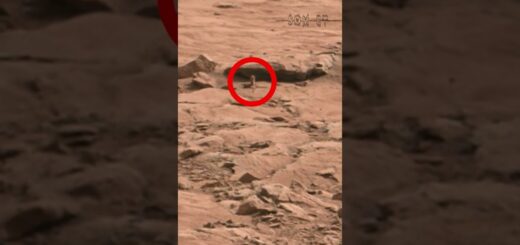China’s Chang’e 5 Will Collect the First Moon Rocks in Nearly 40 Years
China is no stranger to lunar missions. Overthe years, the country has sent a number ofincreasingly challenging missions to our naturalsatellite. The most famous of which, was thehistoric landing of the Chang’e 4 spacecrafton the moon’s far side in 2019. But thisnext launch is about to push the limits evenfurther as Chang’e 5 is headed off to apreviously unexplored lunar region. And thistime, it’s bringing back a souvenir. This is all super exciting because the lasttime lunar samples were brought back to Earthwas during the U. S. and Soviet missions inthe 1960s and 1970s. And it’s perfect timing,because there’s now a renewed push for countriesto focus on better understanding the moon’sevolution and even look for potential lunaractivities such as mining or human colonies. And China is well prepared since it’s beendeveloping two spacecraft for each of thethree phases of its robotic lunar explorationprogram: orbiting, landing and finally, samplereturn. And that’s where Chang’e 5 comes in. It’sChina’s first lunar sample return missionand the spacecraft will contain four partsthat make up the whole mission: an orbiter,an ascender, a lander, and an Earth re-entrymodule. The orbiter will help place the spacecraftinto the lunar. . . orbit. Once there, the landerand ascender will separate from the orbiterand land on the near side of the moon, anunexplored and vast, dark lava plain calledMons Rümker. After touching down, the landerwill drill two meters below the surface, andusing a robotic arm, extract roughly two kilogramsof lunar material. The sample will then bestored in the ascent module, which it willlift off to autonomously dock with the orbiterand transfer its sample to the return vehicle. From there, the return module will then separateto make the 5,000 km journey back to Earth,where it will re-enter the atmosphere fora parachute assisted landing. Soooooo that’s a lot of steps. Which meansthere’s a lot that could go wrong. But again,that’s what makes this mission so excitingbecause it’s all so very ambitious. Andas if there wasn’t enough pressure already,time is of the essence. Unlike Chang’e 4 which is an ongoing mission,this latest endeavour is expected to completeits mission within one lunar day, or roughly14 Earth days. That’s because come nightfall,the extreme temperature shift could jeopardizethe spacecraft. Originally scheduled to launch back in 2017,Chang’e 5 is now expected to take off ona Long March-5 rocket at the end of November2020. And the team won’t have to wait longfor the sample, since it’s expected to arriveback on Earth by early to mid-December. But why exactly do we want these lunar samples?I mean we already have some from the Apolloera, why do we need any more? Well, it’sall about the moon’s evolutionary history. The previous samples were taken from regionswhere the moon was believed to have stoppedits volcanic activity some 3. 5 billion yearsago. But new theories believe that there couldbe some areas where lava could have formedmore recently, like one to two billion yearsago. And if the sample that Chang’e 5 collectsproves that the moon was still geologicallyactive at that time, it could change everythingwe know about the moon’s history. So nopressure, Chang’e 5. And if it doesn’t succeed, even more complicatedbackup missions are already in the works withChang’e 6 and 7 planned for launch in 2023or 2024. So with all these missions linedup, it’s just good practice for the biggestchallenge of them all: sending humans to the moon. Now, for that momentous occasion, China is looking towards the 2030s to accomplishthat feat, so in the meantime, a couple ofpractice runs will hopefully help get readyfor the big day. For more Countdown to Launch, check out ourplaylist here. And if there’s another launchthat you want to see us cover, let us know in thecomments below. Thanks for watching Seeker and I’ll see you next time.













